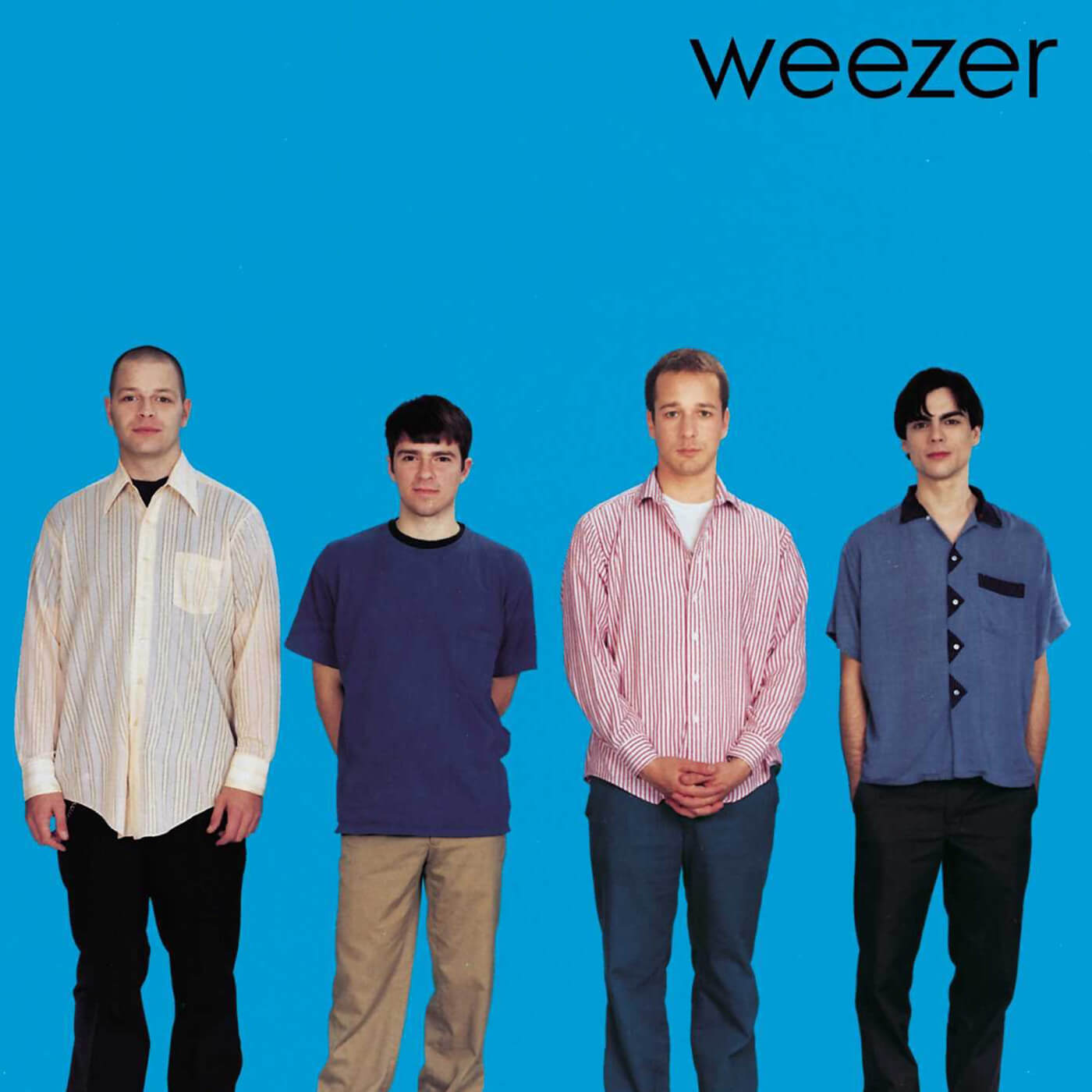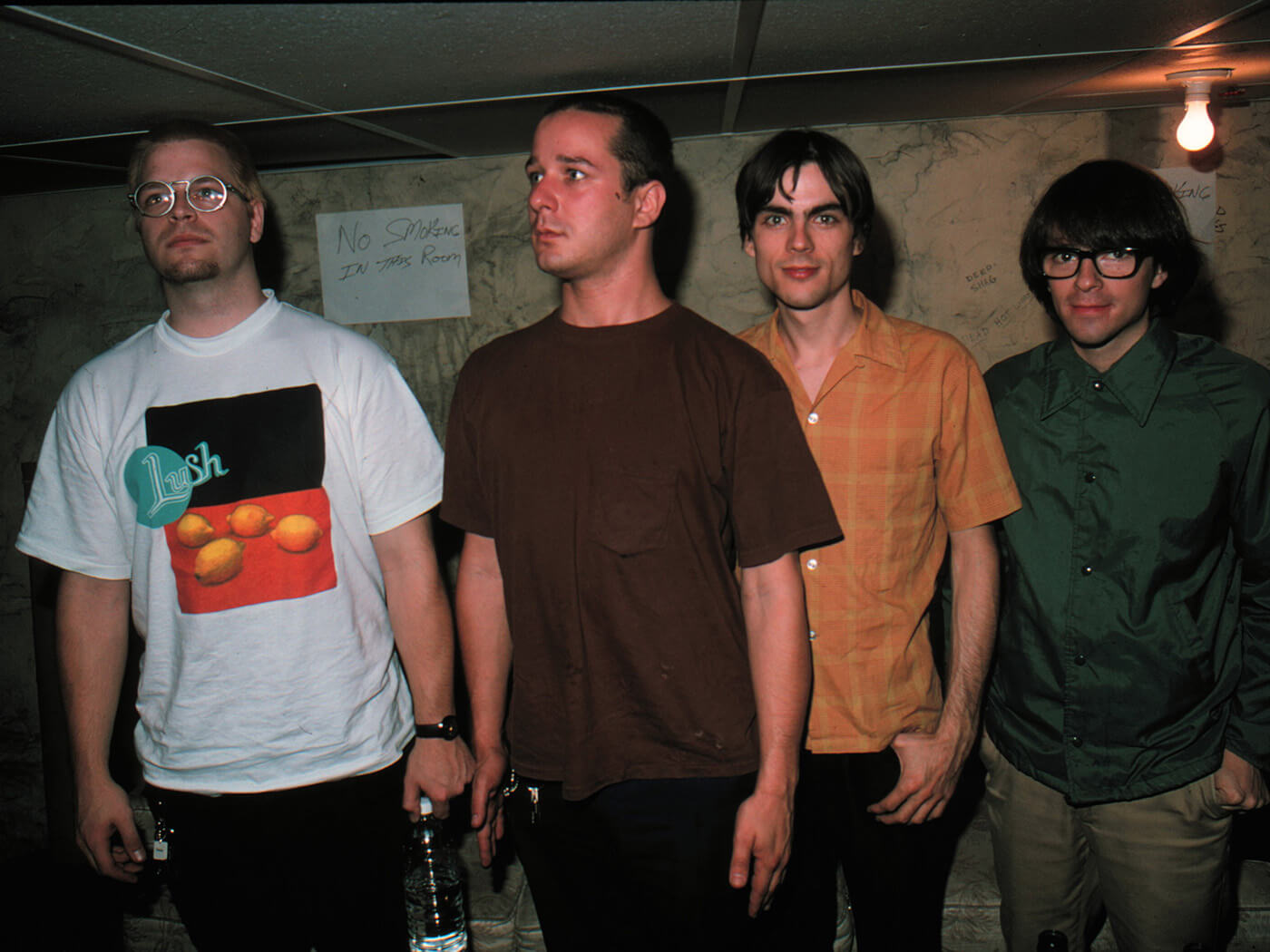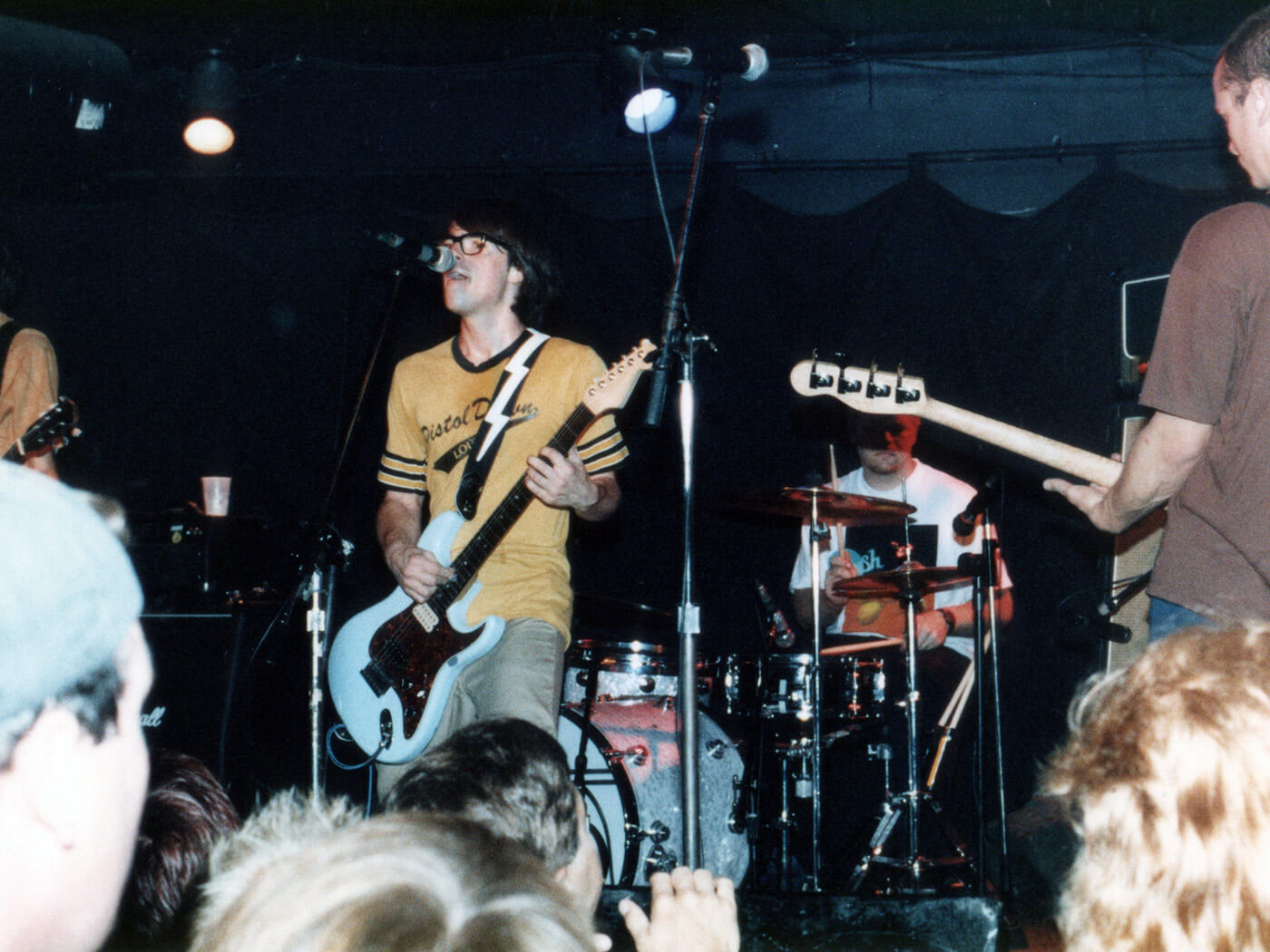The Genius Of… The Blue Album by Weezer
Bridging chart-angled hook-craft with a thunderingly huge guitar sound, Weezer’s 1994 debut was a transformative listen for many who’d shape successive developments in mainstream rock.

Rivers Cuomo. Image: Tim Mosenfelder / Getty Images
In the weeks following Kurt Cobain’s suicide, a stunned music press attempted to predict how the Nirvana-led alternative landscape would respond the seismic shock of its figurehead’s passing. Would radio-dominating grunge and its adjacent punk-rock ideals retreat back into the dingy venues and garages from whence it came? Or would alt-rock splinter off into myriad sub-genres, becoming trickier to commodify? A little over a month after that fateful day, a record would emerge that presented at least part of the answer.
- READ MORE: The Genius Of… Pablo Honey by Radiohead
Weezer’s self-titled debut – universally known as ‘The Blue Album’ – posited a fresh vision of what wide-appeal rock could sound like. Roaring guitar met with confessional, often vulnerable lyrics, housed within an unashamedly vibrant, melody-filled package.
Perhaps the most important shift, was that the band that delivered this ten-track record eschewed any rock star posturing – at least on the surface. As the cover indicated, Weezer’s aesthetic was distinctly non-alternative. Instead, the Californian four-piece took their style cues from the DIY slackers of the lo-fi indie scene, albeit with a broader audience in mind. The Blue Album was arguably a more accurate sketch of the world that the bulk of Middle America’s youth occupied. This was a record by and for the basement dwellers, the D&D players, the painfully shy escapists. This was, put simply, nerd rock.
Formed in Los Angeles in 1992, guitarist and vocalist Rivers Cuomo, drummer Patrick Wilson, bass player Matt Sharp and (initial) guitarist Jason Cropper had struggled to gain recognition amid a grunge-obsessed alternative scene. But Geffen – the major which had made Nirvana stratospheric – saw radio potential in some of the band’s tautly written prototypes of future gems, including shabby anthem Undone – The Sweater Song and the exasperated elegance of Say It Ain’t So. With the world’s ears now on the table, Weezer accepted Geffen’s offer.

Something is bubbling
With The Cars’ lynchpin Ric Ocasek taking on production duties, the recording of The Blue Album was fraught with difficulty, not least, arguments with Cropper, who was eventually replaced during the recording process. The fall-out between Cropper and Cuomo (allegedly down to the imminent birth of Cropper’s first child, and his impending parental responsibilities) led to the Weezer frontman to re-record every note of guitar himself. Though Cropper was replaced by Brian Bell, the new boy didn’t feature on the album itself.
The album consisted of songs the band had been playing on the road for years prior (including the blistering The World Has Turned and Left Me) mingled with a clutch of gleaming new cuts. But where Nevermind had made overt guitar virtuosity uncool in a heartbeat several years hence, Rivers hadn’t got the memo. An unapologetic disciple of KISS, Slayer, Maiden and Priest, Cuomo injected his love of heavy metal into the Beach Boys-inspired pop universe of Weezer’s songs, with even radio hits like Buddy Holly building to an inevitable shred-solo climax.

Armed with a couple of Ocasek’s Les Paul Junior Specials, and a red Fender Jaguar, Rivers ran through Mesa/Boogie Mk1 (atop a Marshall cab). The impact of the gain-heavy tone was exemplified by Sharp and Cuomo playing constant downstrokes on the guitar and bass, locking together both high and low-ends with a rock-steady momentum. “We try to keep all the voicings really low to give us a crunchy sound.” Rivers told Guitar World. “A lot of times, the most important thing is the bass note, the lowest note on the guitar or what the bass is playing; instead of the root, it will be the third or the fifth. We’ll throw in a walking line or something to give the bass line a little more interest.” Rejecting received wisdom, Cuomo and Ocasek opted to record the amp volume at a surprisingly low-level, with the gain (and microphone level) dialled up high, this resulted in the resultant bulky but still ultra-crisp tone.
While the record had punch, much of its abiding brilliance lay in the songwriting’s quirky originality, underscored by some eccentric arrangement choices. The soon-to-be inescapable Buddy Holly hailed rock’s original nerd, and fittingly incorporated a wonky synth line amid its rolling wash of power chords and radio-tailored hooks. The ascending opener My Name is Jonas featured a tangled web of acoustic arpeggios across B, F♯ and G♯ (though Cuomo detuned his guitar a half-step), recorded with a Gibson J-45. Elsewhere, future crowd-pleaser Say it Ain’t So was defined by its conspicuously ornate chord sequence, peppered with intricate slides and hammer-ons across its divine four-chord cycle.

You know I’m yours
For many listeners, The Blue Album was year zero for a new approach to wide-appeal rock. While impactful, heavy guitar, squalling lead lines and radio-ready quiet/loud dynamic sensibility comfortably placed it within a recognisable bracket, the record’s unpretentious honesty, sleeve-wearing geekiness, and colourful melodies helped Weezer resonate far beyond the card-carrying alternative crowd. Some would later, controversially, hail the band as the harbingers of what would eventually become known as emo (particularly in the wake of 1996’s more introverted and uncomfortably honest follow-up Pinkerton).
On its own merits, The Blue Album remains a joyous marriage of deliciously produced rock guitar, sparkling melody-craft and timeless songwriting. Its most enduring cuts – Buddy Holl, Say It Ain’t So and Undone – The Sweater Song – are well-stitched into the pop cultural landscape. Though Weezer would go on to have a long career, the debut’s guitar tone persists a gold reference standard. “America should be proud that they have a Rivers in the pools of records coming out.” The late Ric Ocasek told Rolling Stone after the debut’s release. “He’s writing intelligent lyrics, he’s writing melody. I feel pretty certain that Rivers is a real force. He’s writing songs, and whatever happened to songs? Please, let’s have some more.”

Standout guitar moment
Say It Ain’t So
For more reviews, click here.
